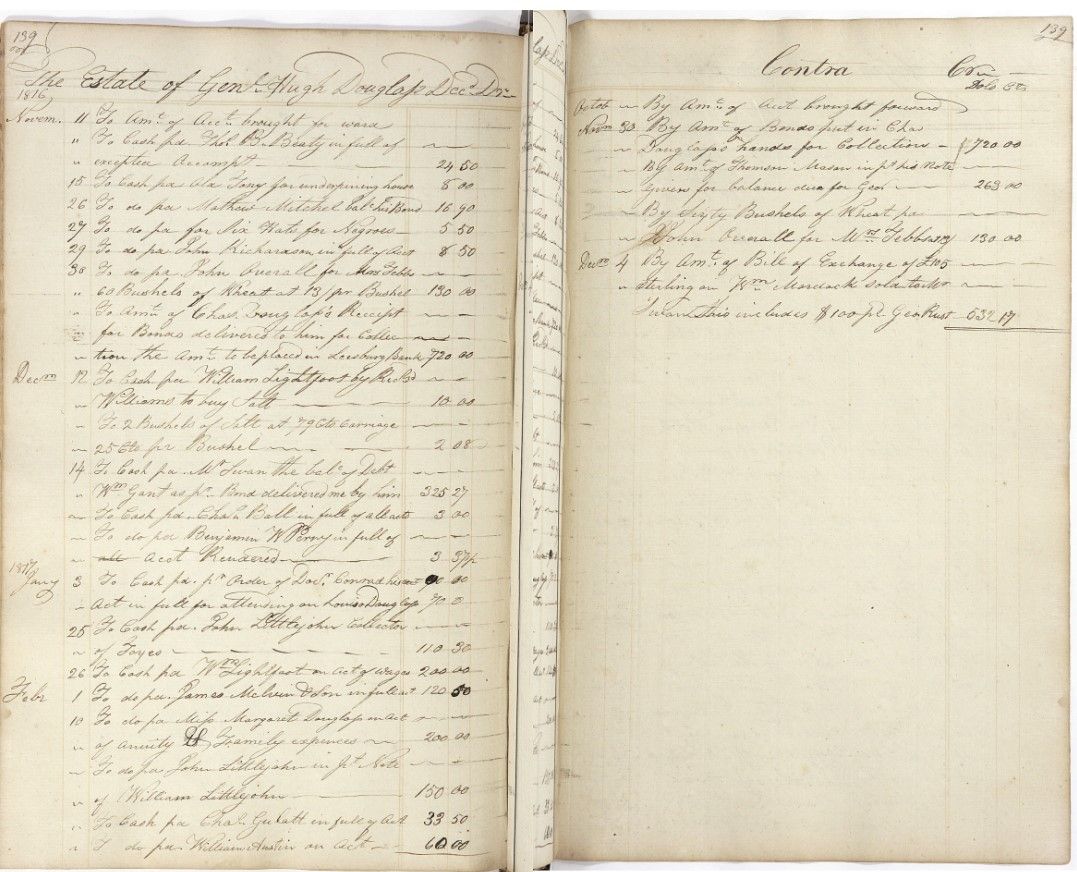, Old Tony
Birth
Death
First Name
Name in Index
Person Biography
Old Tony was most likely an enslaved person. A possible match to the Old Tony found in the Mason family manuscript account book is an Old Tony owned by Frances “Fanny” Carter Lee, who transferred Old Tony, along with sixteen other enslaved people, to her sons-in-law William Brent Jr. of Stafford County and Tench Ringgold of Washington, D.C., in July 1818. This was not the first time that Lee, who had at one time owned more than forty enslaved people and had a grand plantation, had advertised to sell many of the things and people she owned. Fanny Lee was in debt after the 1807 death of her husband, Thomas Ludwell Lee Jr., due to multiple suits brought against his estate in chancery court. On 14 October 1813, Fanny Lee advertised the sale of “Ten Valuable Negro Men,” four of which were listed as having a trade. In July 1818, around the time of Old Tony’s transfer, Brent and Ringgold advertised a public auction of forty enslaved people and expressed the desire for all of them to be sold to one person as they had been brought up in a single family. This sale could have been on Lee’s behalf. Fanny Lee was in a situation where she would have wanted to sell or hire out skilled enslaved workers to generate income.
Some guesses can be made about Old Tony’s life. Beginning in 1751, the Lees worked the land that became Coton Plantation using enslaved labor. Thomas Ludwell Lee Sr. received the 4,700 acres of land that formed the future Coton from his father as well as fifty enslaved people over ten years old. Given the information provided in Brent and Ringgold’s 1818 advertisement that the enslaved people they were selling were brought up in one family, it is possible that Old Tony spent the majority of his life at Coton. Given the environment, it is also very likely that this group of enslaved people developed very close kinship networks that spanned generations.
Around 1786, Thomas Ludwell Lee Jr. and Fanny Carter got married and began to reside on the plantation. This probably resulted in significant changes for the plantation’s enslaved population, who may have had to perform new duties related to the plantation’s new residents. By 1803, Coton Plantation grew to include a few outbuildings, a laundry, a stone kitchen, a smokehouse, and a few more houses for the enslaved, in addition to an expanded main house. The property also included two mills. There were plenty of opportunities for enslaved individuals to gain skills in a variety of occupations on the plantation. Old Tony was likely skilled in construction; his entry in the Mason family manuscript account book concerns payment for underpinning a house, which means to support or strengthen a house’s foundation from below.
It is unclear what happened to Old Tony after he ended up with Brent and Ringgold and left his home. One can only wonder if he got to stay with any of his family (a young Tony was also listed in the deed). Given Brent’s reputation as a slave trader, Old Tony may have been sold to the Deep South like many other enslaved people from Northern Virginia. Though no records exist to tell his fate, perhaps the best way to remember him is as a survivor because he did make it to old age.
By Timmia King

